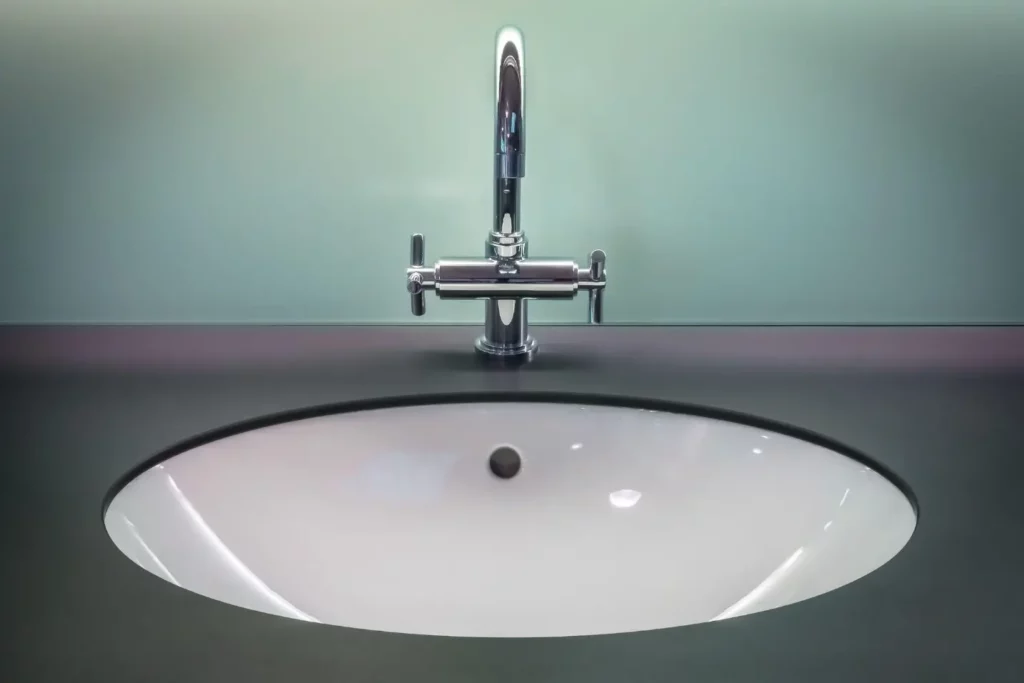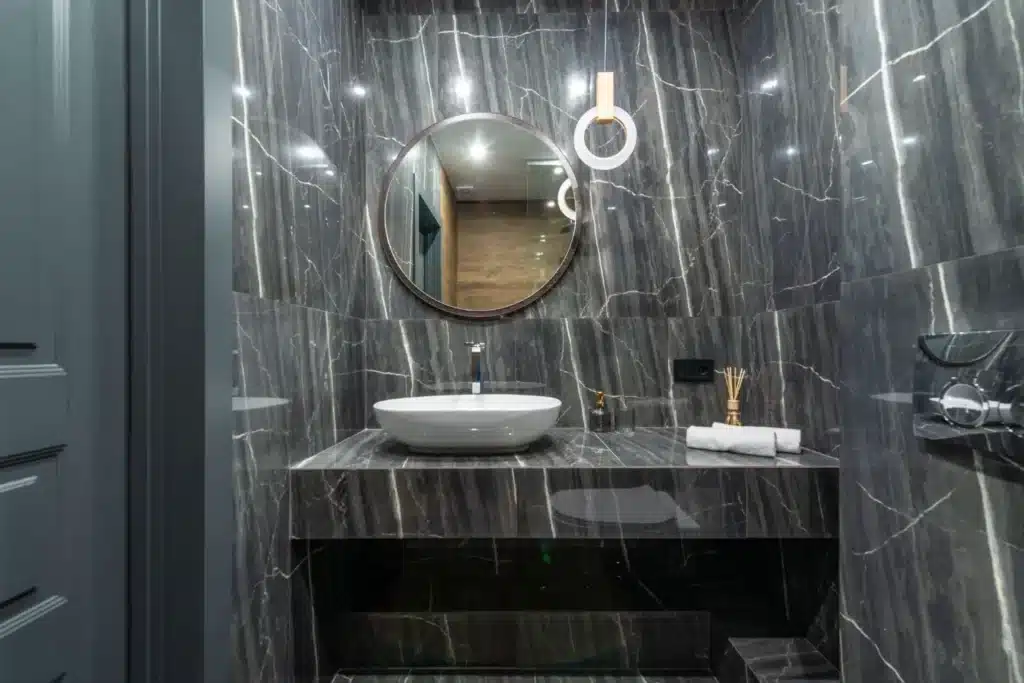Bathroom sinks are available in a wide variety of designs, sizes, colors, and materials. Your bathroom sink’s care requirements, longevity, and aesthetics can all be impacted by the material it is made of. It’s crucial to comprehend the advantages of the many sorts of materials accessible for your bathroom sinks, from clay to glass and everything in between.
What Kind of Material Should You Use for the Bathroom Sink?

The ideal material for the bathroom sink depends entirely on your priorities, which is a personal decision. Each material has characteristics that some may consider advantages and others may view as disadvantages in terms of upkeep, style, cost, and durability.
While sinks made of ceramic and porcelain have remained popular because of their enduring quality and classic beauty, today’s sinks come in a broad variety of distinctive materials that genuinely have something for everyone. It’s common now to see a glass bathroom sink in ordinary homes, although they used to be strictly high-end models.
Ceramic
Pottery classified as ceramic is made of clay and heated to a certain hardness. Clay, powder, and water combinations are often shaped into forms and fired in high-temperature ovens, or kilns, to create ceramics.
Is ceramic resilient?
Ceramic sinks can survive the rigors of daily usage thanks to their incredibly hard surface, which is resistant to scratches, chips, and impacts. Ceramic is the best material for products that are going to be used frequently because of these characteristics.
Care and Maintenance
Particularly tough, slick, and entirely sealed describe ceramic. These qualities prevent debris from penetrating the sink’s surface. This makes maintenance and upkeep incredibly simple; all that is required for daily cleaning is to gently wipe away the dust and dirt with a dry, soft cloth.
We advise using a mild all-purpose cleaner and a gentle sponge or cloth for an additional thorough clean. Use a non-abrasive solution to clean a ceramic sink that has been hand-painted or glazed. Visit this site to learn more about it: https://www.wikihow.com/Clean-a-Ceramic-Sink
Avoid using abrasive sponges or bristle brushes since they might scratch the ornamental surface. Keep cleaning agents from soaking on your sink’s surface. After usage and cleaning, rinse and brush with a soft, dry cloth to avoid soap accumulation.
Describe Porcelain

The toughest clay on the market is porcelain. In a kiln, this material from ceramics is fired to an extremely high temperature, which makes the clay less thick and more porous. Porcelain has a hard exterior and a delicate appearance.
A form of ceramic known as porcelain is created from finely ground clay and burned at temperatures between 1,200 and 1,400 degrees Fahrenheit. Because of its minimal moisture absorption and simplicity of cleaning, porcelain is frequently used in sinks, but it is also utilized for trimming objects like spigot handles, inset buttons, bathroom accessories, and shower heads.
Porcelain sinks are particularly popular in older homes; however, they often have a cast iron or a different metal foundation with a porcelain finish. Fireclay, a specific sort of clay that can withstand extremely high temperatures yet may be produced in a variety of methods, is the material used to make all porcelain sinks. Click here for more on Fireclay.
The “old method,” which involved coating cast iron with porcelain, was common in the early half of the twentieth century but is now rarely applied. Instead of cast iron, a more contemporary technique involves using stainless steel, where the porcelain material is bonded to the material at extremely high temperatures.
Can porcelain be broken?
Ceramic is quite robust. Many porcelain sinks that are between fifty and one hundred years old are still in use today. Glass and metal are used with the clay in the porcelain substance used to produce sinks to increase its strength and resilience to chemicals and high temperatures.
Porcelain sinks, however, are prone to stains and can chip. Don’t put anything sharp or heavy into a porcelain sink.
Is porcelain always white?
Despite the fact that porcelain is traditionally white, sinks may be created in any hue or multicolored pattern to match your decor.
Care and Maintenance

Dishwashing soap or an all-purpose cleanser are gentle soaps to use; stay away from abrasive chemicals that might harm your sink. To avoid an accumulation of soap scum, oil, and filth, wash your porcelain sinks every day and wipe them dry using a soft cloth.
Never use vinegar to clean a porcelain sink. Despite its many other uses around the house, its strong acid concentration can harm the skin’s surface.
What is a genuine stone sink?
Carved using a single piece of stone, stone sinks are unique works of art. Every stone block has unique characteristics, such as color variation, veining, small holes, and specks of different minerals, such as silver, bronze, or gold.
Sinks made of natural stone come in a variety of hues and features. Some stone sinks are totally formed and polished, while others are left with striking contrasts of unpolished characteristics. Every single stone sink is completely unique because it was formed under natural circumstances.
Are there specific installation instructions?
Since most sandstone is porous, it’s crucial to take extra precautions with your sink to guard against dangerous contaminants. Seal your sink as soon as it arrives with a solution.
Reseal the basin at least once a year to maintain its natural gloss. Use silicone for securing the drain carefully during sink installation, and take additional care to keep silicone away from any exposed sink area.
Never use plumber’s putty or oil-based sealants on a genuine stone sink. If these items are used close to the polished basin’s surface, the stone will become stained. Use a regular stone and ceramic stain remover if discoloration does happen.
Granite
Deep beneath, molten rock slowly cools, enabling crystals to crystallize, and this process creates granite. Depending on the rock type and heat at which the granite occurs, these crystals produce speckles, flecking, and bigger flakes.
Granite is a great stone for everyday usage since it is extremely thick and durable. The Latin term granum, which means “a grain,” gave rise to the English word “granite,” which describes the stone’s coarse-grained texture.
